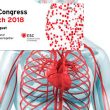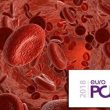Increases in the rates of revascularization and heart failure do not justify the early mortality advantage shown by treatment of the culprit artery only in patients with acute myocardial infarction and cardiogenic shock. The 1-year follow-up of the CULPRIT-SHOCK trial reinforces the idea of only treating the culprit artery, with an option for revascularization of...
NSAIDs and Risk of Bleeding in Patients with Atrial Fibrillation
The use of nonsteroidal anti-inflammatory drugs (NSAIDs) is very frequent and many of these medications are sold over-the-counter, but they can expose patients with atrial fibrillation using warfarin or dabigatran to potentially dangerous bleeding. Such a combination is a “perfect storm” of sorts, since atrial fibrillation is the most frequent type of arrhythmia and its...
Noradrenaline seems superior to adrenaline in patients with cardiogenic shock
Noradrenaline (or norepinephrine) seems a safer choice than adrenaline (epinephrine) in patients undergoing acute myocardial infarction complicated with cardiogenic shock, according to the outcomes of this randomized study. Patients receiving adrenaline more often developed refractory shock, which led to early termination of this study. The administration of adrenaline was associated to over increased cardiac rate,...
Endovascular Therapy in Stroke: Much Evidence and Few Trained Operators
Endovascular therapy is now considered as the standard of care for acute ischemic stroke caused by large vessel occlusion. The time between symptoms onset and reperfusion emerges as the most determinant factor for good clinical outcomes, much more strongly than even in acute myocardial infarction. The saying “time is brain” is even more relevant than...
New Ultra-Thin-Strut DES: Do They Outperform Second-Generation DES?
The new drug-eluting stents (DES) equipped with ultra-thin struts are showing a lower risk of target lesion failure as a result of lower rates of acute myocardial infarction and similar rates of revascularization, according to this meta-analysis soon to be published in Circulation. Such a difference is evidenced at a 1-year follow-up when compared with...
Cardiovascular Events During World Cup Soccer, an Old Article Worth Remembering
Is it possible for a soccer match to trigger an infarction? Is it possible for the stress derived from watching our national team play to trigger a cardiovascular event? Many might think that these are exaggerations. However, not only is it possible, but it has been proved beyond the shadow of a doubt for some...
FFR vs Angiography Guided CABG
In the daily practice and in randomized studies such as Syntax or Freedom, most cardiovascular surgeons across the world use angiography guided CABG to teat 50% coronary stenosis. Many of these lesions might not be functionally significant. There is abundant evidence in favor of fractional flow reserve (FFR) guided PCI, but FFR guided CABG is...
EuroPCR 2018 Highlights | The Best of a Congress that Left Plenty of News
A new edition of EuroPCR has come and gone. Now is the time to make a balance and review the main presentations at one of the most important European congresses on cardiovascular interventions. Thus, we have selected the six most relevant studies presented at the event. In our opinion, you cannot afford to miss them!...
What Antiplatelet Therapy Should We Use in Patients with Stroke/TIA? Interesting Results for the POINT Trial
Courtesy of Dr. Alejandro Lakowsky, MTSAC (Full Member of the Argentine Society of Cardiology) The New England Journal of Medicine (NEJM) recently published an article about the POINT trial (simultaneously presented at the European Stroke Organisation Conference), a long-awaited randomized clinical trial to assess the efficacy and safety of dual antiplatelet therapy (DAPT) with aspirin...
EuroPCR 2018 | Ultimaster Registry: Difference in Strut Thickness
This work compared the safety and efficacy of angioplasty with thin-strut (80 µm) sirolimus-eluting stents with a cobalt chromium structure (Ultimaster) vs. thick-strut (120 µm) biolimus-eluting stents with a cobalt chromium structure (Nobori). This study compared two prospective multicenter single-arm registries: e-Ultimaster and NOBORI 2. The Ultimaster Registry included over 37,000 patients in 4 continents, while the NOBORI 2 Registry included...









